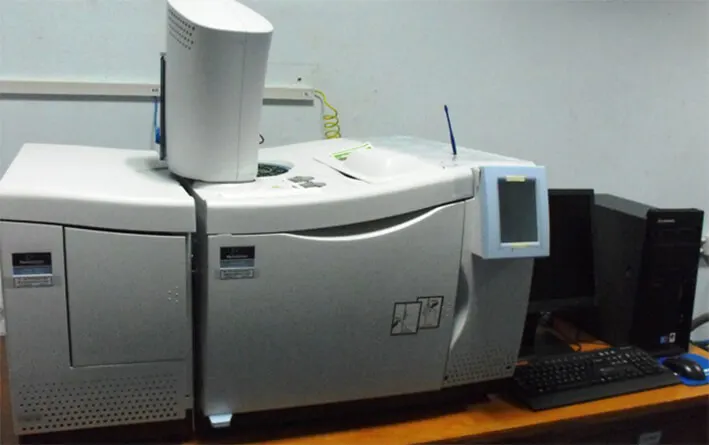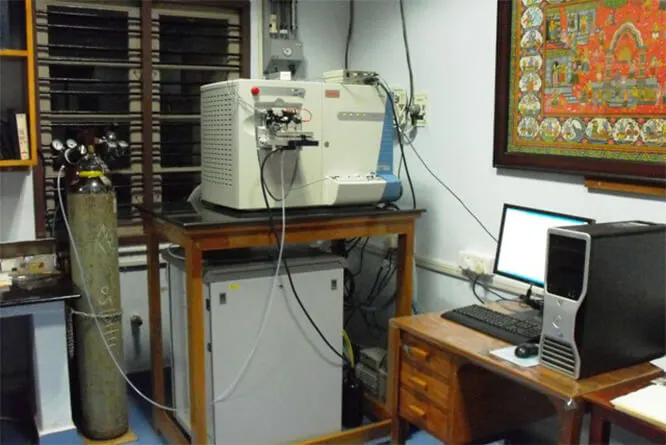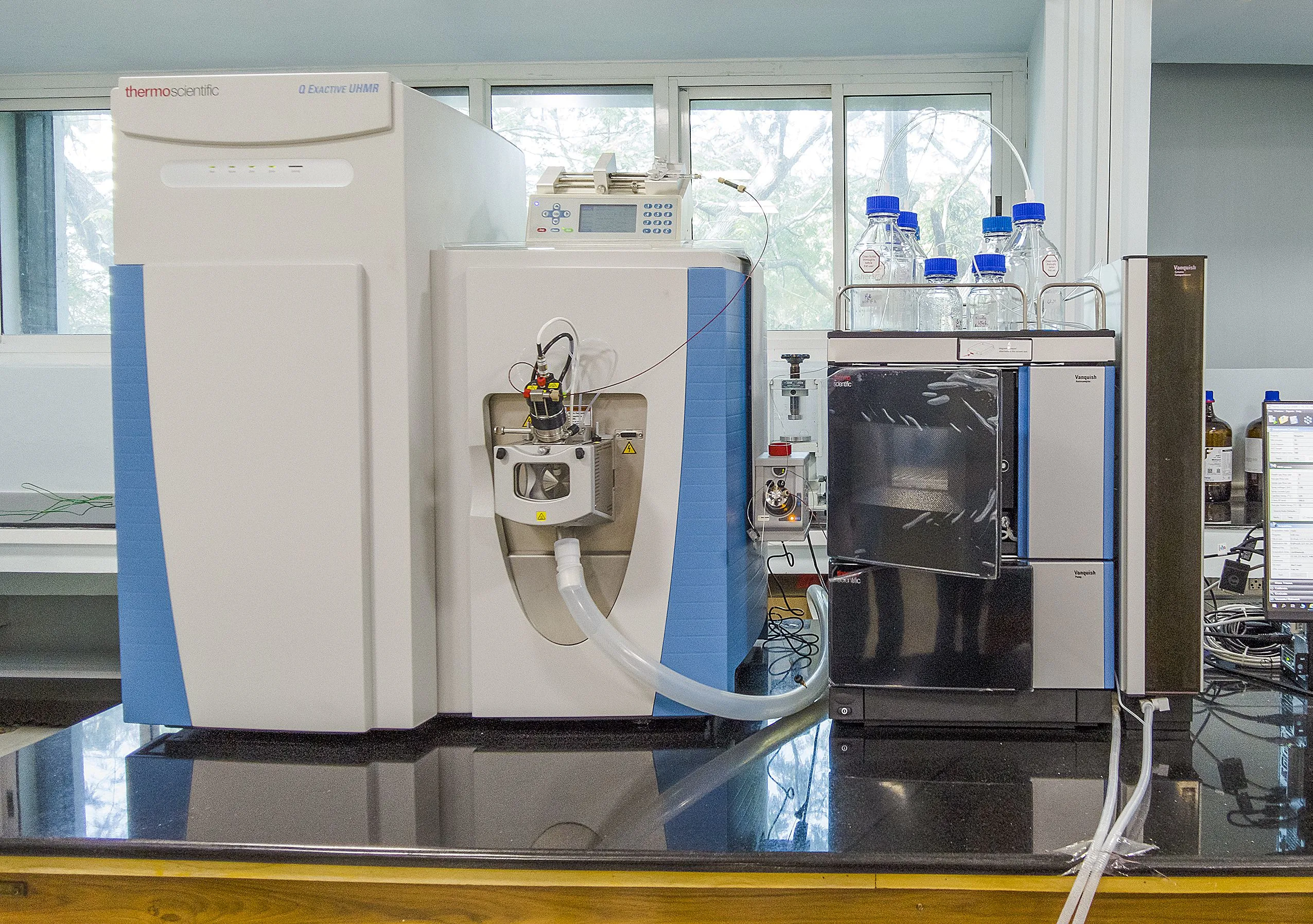
Instrument Specification:
The GCMS (Gas Chromatograph Mass Spectrometer) instrument is mainly consists of two parts, namely GC part (Clarus 680) and MS part (Clarus 600 C). GC part is coupled with autosampler which injects the sample and has two kind of detector, ECD (Electron Capture Detector) and TCD (Thermal Conductivity Detector). MS part can operate in EI (Electron Ionization) and CI (Chemical Ionization) mode and coupled with a quadrupole mass analyzer where scan up to m/z ratio of 600 is possible.
About the Instrument:
This instrument provides high sensitivity in terms of detecting molecules with very low concentration. Two kinds of operations can be possible with this instrument. Using only the GC part, the gas chromatograph from a mixture of compounds can be obtained and the amount of the compounds can also be determined quantitatively. Using the MS part combined with the GC part, it is possible to find out the mass of each compound and from the mass spectra, identification of the exact compound can be possible by comparing with the previous database. Samples with lower boiling points are the ideal analyte for this instrument.
Theory of operation:
The injected liquid or gas samples pass through a capillary GC column kept in a temperature controlled oven where the components from the mixture are separated according to their retention time and come out of the end of the column. Depending on the operational mode either it goes to the MS part or to the GC detector. If the instrument is being operated for gas chromatography, then the samples go either to the ECD or TCD detector depending on the selection by the user. Otherwise the samples are directed to the MS part of the instrument. Here upon impact with electron or other ions it ionizes and fragments. These ions enter into the quadrupole analyzer which separates the ions according to their mass to charge ratio and the ions reach detector. It produces signal which corresponds to the intensity of the ions and this intensity is plotted against m/z of the ions to get the mass spectra.






